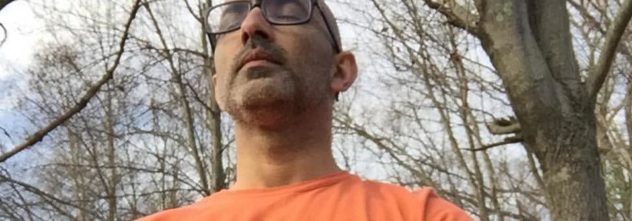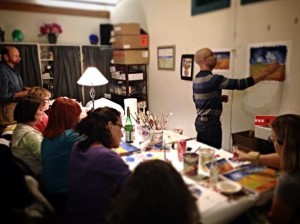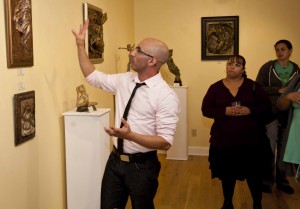Belonging and Becoming

Belonging is a beautiful word. The word itself, from a phonetic, artistic, and poetic rhythmic point of view is really not that pretty. It doesn’t sound strong and impressive like “Behold!“, or romantic and soft as “Love” or “Embrace”. You can try saying “belonging” with different accents and it still doesn’t feel flowing and comfortable to the pronunciation. It feels heavy and clumsy. Nevertheless, it is beautiful in the sentiment of its combined parts, and the completeness it brings to the soul when it is achieved. (Well, that was philosophically exciting!)
‘Be’ – ‘longing’. Longing is a yearning desire. Belonging is a yearning desire to be, the desire to find a sense of identity, to be a connected part of something or someone. Belonging is the desire to participate in a close and intimate relationship outside of ourselves. Humans are wired to coexist, and to be together. It is this sense of participation that kept the human race together for so long. We fight it, we deny it, we isolate ourselves, and hide inside a cocoon of self-protection and self-preservation, where our fears and imperfections are out of sight from others and ourselves, but we can’t escape from the innate need to be part of something and someone. That cocoon allows us to avoid confrontation and judgement, and increases in us a false sense of independence. Sadly, it also keeps us away from love, friendship, and intimacy. All of these we taste at a distance without ever delighting fully in the experience. Imagine a turtle without its shell. Belonging removes that shell and exposes us as we truly are.
Although belonging is an innate need, it might not come naturally to some of us, or so we say. We often reject identifiers and in the process reject ourselves looking for a substitute for the identity we can’t comprehend… so we become. Becoming is turning into something else. Often, becoming results in adopting and adapting to something or someone we are not. In an effort to belong, we reject belonging to become, in order to belong. Does it sound confusing and contradicting? Welcome to the human experience! We engage with people and activities trying to get rid of the shell, but slaving ourselves to a deeper confinement within. We use justification and self-righteousness in the process. The path of becoming may result in an image in the mirror of someone we can’t recognize.
We are designed for closeness and intimacy. I’m not talking about indiscriminate sexual encounters used to masquerade our need for belonging, which sounds like another conversation altogether. Belonging is a sense of community that reaches far beyond the sexual realm into the mind, the soul, and the spirit in unbreakable bond. Becoming requires painful effort, and leads to constant fear that someday your attempts could be betrayed, rejected, or undermined. In belonging, we are already accepted. The shell falls naturally, relationships are cultivated and maintained, not forced or coerced. Love reigns in belonging and becoming is transforming into who you really are, not something else.

 The more I learn about learning, the more I am convinced that learning is a transformative experience in which knowledge is shared and each personal experience is intertwined as part of a larger story. I am an educator, instructional designer, and fine artist. I teach with a holistic view of the world but focusing on the specific needs of the learner and their experience. I aim to guide learners to connect and use knowledge in practical ways. Experience motivates theory, and theory substantiates practice as experience supports theory. In my practice, I provide learners with opportunities for sharing knowledge and experience, exploration, experimentation, and discovery, in both individual and collaborative levels.
The more I learn about learning, the more I am convinced that learning is a transformative experience in which knowledge is shared and each personal experience is intertwined as part of a larger story. I am an educator, instructional designer, and fine artist. I teach with a holistic view of the world but focusing on the specific needs of the learner and their experience. I aim to guide learners to connect and use knowledge in practical ways. Experience motivates theory, and theory substantiates practice as experience supports theory. In my practice, I provide learners with opportunities for sharing knowledge and experience, exploration, experimentation, and discovery, in both individual and collaborative levels. Seeing how knowledge becomes alive is of great motivation and validation for the effort. It is also a learning experience for myself. “Individuals are not just the result of their environment or life circumstances, but rather individuals consciously contribute to their environment or life circumstances to change their environments and themselves.” It is a rewarding experience to see and being part of the transformation, more so when I see my students serving others for the same purpose.
Seeing how knowledge becomes alive is of great motivation and validation for the effort. It is also a learning experience for myself. “Individuals are not just the result of their environment or life circumstances, but rather individuals consciously contribute to their environment or life circumstances to change their environments and themselves.” It is a rewarding experience to see and being part of the transformation, more so when I see my students serving others for the same purpose.
If We Only Knew We Could Predict Behavior
Learning and teaching are complicated endeavors. Every component of a purposeful learning process is important to achieve results. However, there are so many factors and variables to consider that it is almost impossible to count them all. As educator and instructional designer I aim to provide effective learning solutions. Some people might think that an effective learning solution is to provide all the possible answers to a given problem. I prefer to think that guiding people to find the answers for themselves is a better approach.
How can we accomplish this? We must draw knowledge and tools from other disciplines. Psychology for example provides information to facilitate learning, or as Howard Gardner suggested, it provides an understanding of the conditions where education takes place and of the recipients and practitioners of knowledge. If we only knew how people would behave in a specific learning environment, won’t we make sure to be ready to suit the needs accordingly? Understanding what people think of themselves and their skills to succeed in specific learning endeavors can provide instructional designers with direction to design learning goals and instructional strategies that aim not only for the acquisition of knowledge but also providing for a transformative learning experience. Knowing how learners perceived their likelihood to achieve success also provides for a better understanding of the constraints and opportunities of a proposed learning solution.
In my research, I explore self-efficacy beliefs as entry behaviors. Self-efficacy beliefs are personal perceptions of the skills to achieve a goal. If we only knew that self-efficacy beliefs could provide hints not only in how people will approach a learning situation, but to us to be prepared to teach or guide accordingly, won’t we take time to know our students better? According to the results of the study, people not only approach a task according to their self-efficacy, but they also behave as predicted. This provides a better idea of opportunities and constrains in proposed learning solutions.
Confronting new challenges brings consciously or unconsciously the need to assess and balance skills with requirements. Individuals consider what is required to achieve a goal and examine if they have the skills to achieve it. They also consider if they have the skill to learn the skills required to achieve the goal. Task engagement, performance, anxiety, stress, persistence, and coping skills are also affected by self-efficacy. Knowing this before hand prepares instructional designers to create learning solutions accordingly and to provide a transformative experience through the learning process.
In order to provide learning solutions of transformation it is necessary to know what needs to change. This is another way to measure success. Let’s call it “base line”. Assessing previous knowledge is important. However, knowing how people feel about the knowledge and skills they possess can make a great difference in how they approach a task. The act of teaching and guidance could be designed and approached based on learning strategies design to fit the specific needs. We could also be changing lives. Instructional designers could be helping to improve self-efficacy along with providing effective learning solutions.